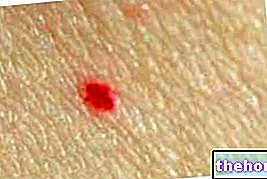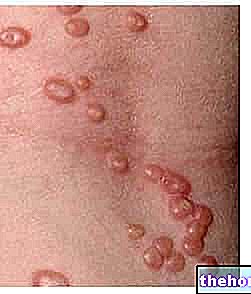Generality
Moles (or nevi) are pigmented lesions of the skin or mucous membranes, resulting from an abnormal development of melanocytes or snow cells.

In most cases, moles appear spontaneously over the course of an individual's life, but some of these lesions may be congenital (ie present from birth).
There are numerous types of nevi, which are classified according to their clinical and dermoscopic characteristics. In most cases, the nature of such pigmented skin lesions is benign; sometimes, however, some of these can degenerate and give rise to cancers, such as melanoma. The latter can arise, in fact, on healthy skin or derive from an already existing or recently appeared nevus, which evolves in a neoplastic sense.
For this reason, a correct prevention practice to follow is the regular dermatological control of pigmented spots that occur on the skin.
Causes and risk factors
Moles are localized lesions, caused by a proliferative process characterized by the accumulation of melanocytes or nevus cells (deriving from melanocytes).
Melanocytes are cells responsible for the production of melanin, the pigment responsible for skin color and tanning).
The reason why this proliferation begins is not yet fully known, but the onset of moles appears to depend in part on genetic factors, immune status, exposure to ultraviolet radiation, and certain drug treatments. In addition, some moles may become more prominent during lactation. "adolescence and pregnancy, demonstrating a certain degree of hormonal sensitivity.
Moles may be present from birth or early childhood (congenital) or appear later in life (acquired).
The common acquired melanocytic nevi are small macules, relatively flat or raised with respect to the skin, uniformly pigmented and with well-defined and rounded edges.




























